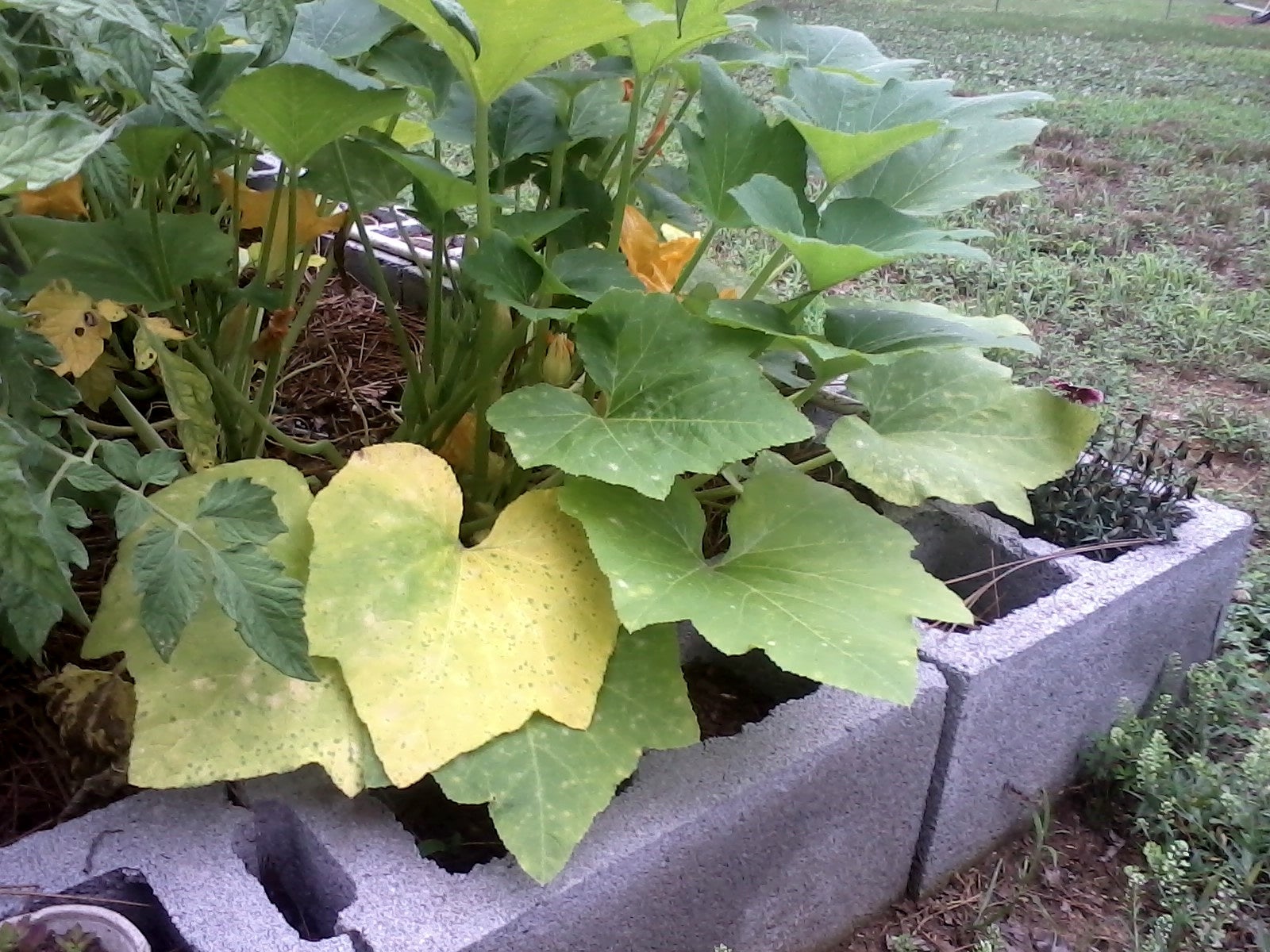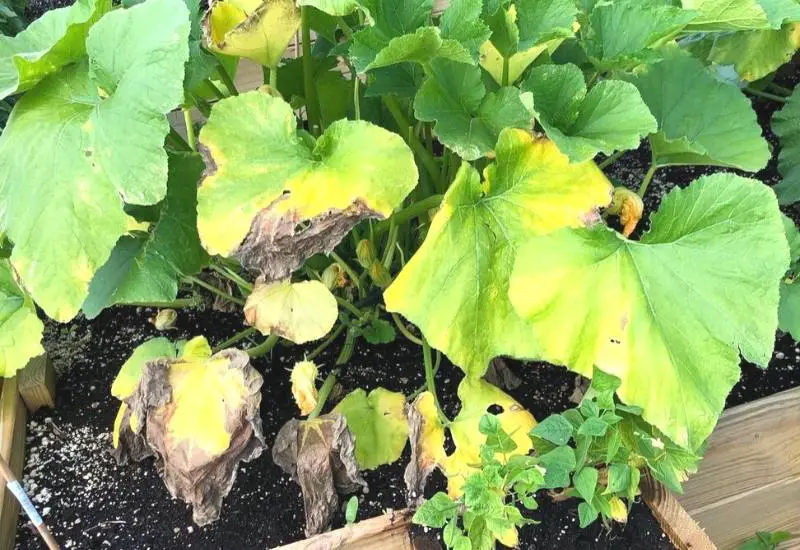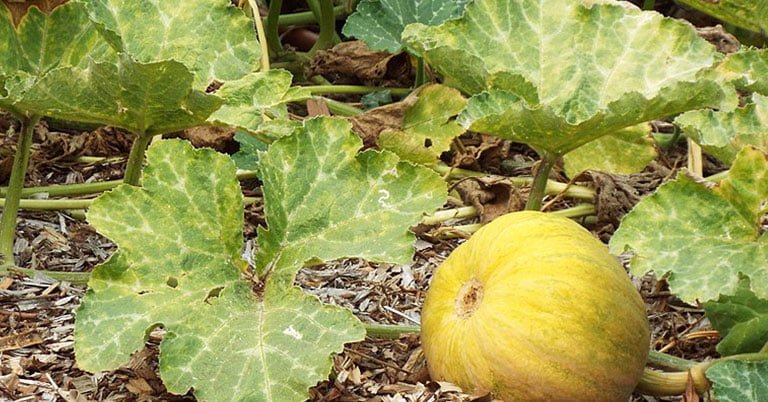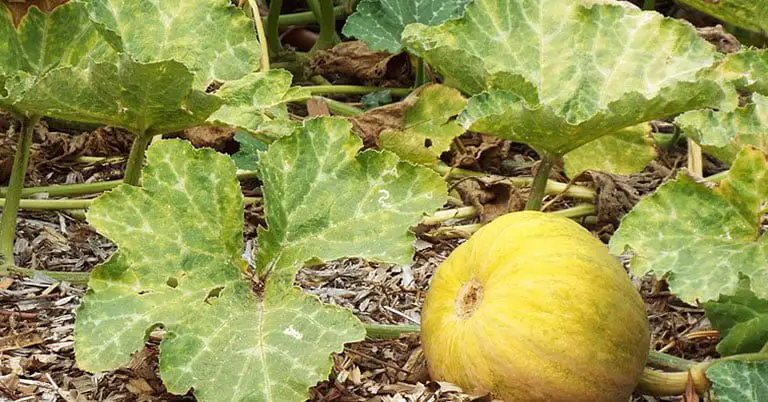Have you noticed your squash leaves turning yellow and wondered why? This article will explore the reasons behind this phenomenon and provide some helpful tips to ensure the health and vitality of your squash plants. Whether you’re a seasoned gardener or just starting out, understanding why squash leaves may be turning yellow can help you take the necessary steps to prevent further damage and foster a thriving garden. So, let’s dive into the fascinating world of squash leaves and unravel the mystery behind their yellowing!

Lack of Nutrients
Nitrogen deficiency
One of the main reasons why squash leaves may turn yellow is due to a lack of nitrogen in the soil. Nitrogen is an essential nutrient for plants, as it plays a vital role in photosynthesis, helping to create chlorophyll and promote healthy leaf growth. When squash plants do not receive enough nitrogen, their leaves can appear pale yellow or even white. This is because without sufficient nitrogen, the plant’s ability to produce chlorophyll is compromised, leading to the yellowing of the leaves. To remedy nitrogen deficiency, consider using a nitrogen-rich fertilizer or incorporating organic matter such as compost into the soil.
Iron deficiency
Iron deficiency is another common nutrient-related cause of yellowing leaves in squash plants. Iron is crucial for the production of chlorophyll and without it, leaves can develop a condition known as chlorosis, where the green pigment is unable to form properly. As a result, the leaves turn yellow, starting from the younger leaves and progressing upwards. To address iron deficiency, you can apply an iron chelate fertilizer or add organic matter to improve the iron content in the soil.
Magnesium deficiency
When squash plants lack sufficient magnesium, they can develop yellowing leaves with green veins, a condition known as interveinal chlorosis. Magnesium is necessary for the activation of enzymes involved in various metabolic processes, including chlorophyll production. Without enough magnesium, chlorophyll synthesis is hindered, leading to the characteristic yellowing between the veins. Applying magnesium sulfate or Epsom salt to the soil can help correct this deficiency and promote healthy leaf coloration.
Manganese deficiency
Manganese deficiency can also contribute to yellowing leaves in squash plants. Manganese is involved in photosynthesis and enzyme activation, playing a vital role in plant energy production. When squash plants lack manganese, they may exhibit interveinal chlorosis similar to magnesium deficiency. To address this issue, consider applying manganese sulfate or incorporating organic matter rich in manganese into the soil.
Overwatering or Poor Drainage
Waterlogged soil
Overwatering can result in saturated soil conditions that impede root function and lead to yellowing leaves in squash plants. Waterlogged soil lacks adequate oxygen, preventing the roots from obtaining the necessary nutrients and causing root rot. As a consequence, the leaves may turn yellow due to the plant’s inability to take up nutrients properly. Avoid overwatering by ensuring the soil drains well and allowing the top few inches of soil to dry out before watering again.
Excessive watering
While squash plants require regular watering, excessive watering can be detrimental and cause yellowing of the leaves. When the soil is constantly wet, the roots may become waterlogged, limiting their ability to absorb nutrients effectively. As a result, the plant may exhibit symptoms such as yellowing leaves. It is important to strike a balance by providing enough water for the plant’s needs without saturating the soil.
Lack of oxygen in the root zone
Poor drainage and overwatering can lead to a lack of oxygen in the root zone, a condition known as oxygen deprivation or hypoxia. When the roots are deprived of oxygen, they are unable to function properly, and the plant may show signs of stress, including yellowing leaves. Ensuring adequate drainage and allowing the soil to dry out between watering can help alleviate this issue.
Pests and Diseases
Squash bugs
Squash bugs can cause significant damage to squash plants, including yellowing leaves. These pests feed on the sap of the leaves, causing them to wither and turn yellow. Additionally, they can inject toxic saliva into the plants, further exacerbating the damage. Regular inspection and prompt removal of squash bugs can help prevent yellowing leaves and protect the overall health of the plants.
Aphids
Aphids are tiny, sap-sucking insects that can infest squash plants and contribute to yellowing leaves. These pests reproduce rapidly and can cause significant damage by draining the plant’s sap and secreting a sticky substance known as honeydew that attracts mold. The yellowing of leaves is often a result of nutrient loss due to aphid infestations. Applying insecticidal soap or using natural predators such as ladybugs can help control aphid populations and minimize leaf damage.
Powdery mildew
Powdery mildew is a fungal disease that commonly affects squash plants, causing yellowing leaves along with a powdery white coating. This disease thrives in warm, humid conditions and can spread rapidly. As the fungus colonizes the leaves, it disrupts photosynthesis, leading to the characteristic yellowing. Fungicide applications early in the growing season and ensuring proper air circulation can help prevent and manage powdery mildew.
Downy mildew
Downy mildew is another fungal disease that can cause yellowing leaves in squash plants. It typically starts as pale yellow spots on the upper surface of the leaves and progresses to cover the entire leaf. Downy mildew thrives in cool, moist conditions, particularly during periods of high humidity. Implementing preventive measures such as crop rotation, providing adequate spacing between plants, and using resistant varieties can help control downy mildew and prevent leaf yellowing.
Fusarium wilt
Fusarium wilt is a soilborne fungal disease that affects squash plants and can lead to yellowing leaves. This disease obstructs the plant’s vascular system, interfering with water and nutrient uptake. Consequently, the leaves may exhibit yellowing, wilting, and eventually die off. Control measures include using resistant varieties, practicing crop rotation, and ensuring proper soil drainage.
Environmental Stress
Extreme temperatures
Extreme temperatures, whether excessively hot or cold, can cause stress to squash plants, resulting in yellowing leaves. High temperatures can lead to heat stress, causing the leaves to wilt and turn yellow as the plant tries to conserve water. Similarly, cold temperatures can damage the plant’s cells, impairing its ability to absorb and distribute nutrients, leading to leaf yellowing. Providing shade during hot weather or using protective coverings during cold snaps can mitigate temperature-related stress.
Sunburn
Just like human skin, squash leaves can also suffer from sunburn. When exposed to intense sunlight for prolonged periods, the leaves may develop yellow or brown patches. This is often caused by the leaves being inadequately hardened off before being exposed to direct sunlight. Providing shade during the hottest part of the day or gradually introducing the plants to full sun can prevent sunburn and promote healthy leaf coloration.
Wind damage
Strong winds can cause physical damage to squash plants, leading to stress and the yellowing of leaves. The leaves may become torn or shredded, disrupting their ability to perform vital functions such as photosynthesis and nutrient absorption. To protect squash plants from wind damage, consider using windbreaks or stakes to provide support and reduce the impact of strong winds.

Improper pH Level
Acidic soil
Squash plants prefer a slightly acidic soil pH, typically ranging from 6.0 to 6.5. When the soil becomes too acidic, the availability of nutrients necessary for healthy plant growth can be hindered. This can lead to yellowing leaves as the plants struggle to absorb essential nutrients. Regularly testing the soil pH and making appropriate amendments, such as adding lime, can help maintain the optimal pH level for squash plants and prevent leaf yellowing.
Alkaline soil
Conversely, if the soil becomes too alkaline, squash plants may also experience yellowing leaves. In alkaline conditions, certain nutrients become less available for plant uptake, leading to deficiencies and subsequent leaf discoloration. Correcting alkaline soil can be challenging, but incorporating organic matter and using acidifying fertilizers or amendments can help lower the pH and improve nutrient availability.
Lack of Light
Shading from taller plants
In a crowded garden or if squash plants are positioned too closely to taller plants, they may not receive adequate sunlight, leading to yellowing leaves. Taller plants can cast shadows over the squash plants, depriving them of the necessary light for photosynthesis. To address this issue, consider spacing plants appropriately and providing trellises or stakes to support vertically growing squash varieties, ensuring sufficient exposure to sunlight.
Insufficient sunlight
Squash plants thrive in full sun, typically requiring a minimum of six hours of direct sunlight per day. If they do not receive enough sunlight, their growth can be stunted, and their leaves may turn yellow. This occurs because they are unable to produce sufficient energy through photosynthesis. To resolve this issue, choose a sunny location for planting squash and avoid shaded areas.

Over-fertilization
Excessive use of nitrogen-based fertilizers
While nitrogen is essential for plant growth, over-fertilization with nitrogen-based fertilizers can lead to nutrient imbalances and yellowing leaves. Excessive nitrogen can promote excessive leaf growth at the expense of fruit production, resulting in pale yellow foliage. To prevent this issue, carefully follow the recommended dosage of fertilizers and consider using organic fertilizers with a more balanced nutrient profile.
Imbalanced fertilizer ratio
Using a fertilizer with an imbalanced nutrient ratio can also contribute to yellowing leaves. For squash plants, an excess of certain nutrients, such as phosphorus or potassium, relative to other essential nutrients can disrupt the plant’s nutrient uptake and utilization. This can result in leaf yellowing and negatively impact overall plant health. Choosing a balanced fertilizer or amending the soil with specific nutrients based on a soil test can help prevent nutrient imbalances and keep the leaves healthy and green.
Watering with Hard Water
High mineral content in water
Water with a high mineral content, commonly known as hard water, can cause yellowing of squash leaves over time. The minerals present in hard water, such as calcium and magnesium, can accumulate in the soil and disrupt nutrient availability. As a result, squash plants may show signs of nutrient deficiencies, including yellowing leaves. Using rainwater or filtered water can help mitigate the effects of hard water on plant health.
Accumulation of salts in the soil
Watering with hard water can also contribute to the accumulation of salts in the soil. As water evaporates, the salts left behind can gradually build up in the soil, affecting nutrient uptake and leading to leaf yellowing. Regularly leaching the soil with clean water to flush out excess salts can help prevent this issue. Additionally, amending the soil with organic matter can improve soil structure and water drainage, reducing the risk of salt accumulation.

Soil Compaction
Heavy foot traffic
Frequent foot traffic around squash plants can result in soil compaction, compromising root health and impeding nutrient absorption. Compacted soil lacks sufficient pore space for air and water movement, leading to poor drainage and inadequate oxygen supply. When the roots are stressed due to compaction, the plant may exhibit yellowing leaves. To minimize soil compaction, create designated pathways in the garden and avoid walking directly on the soil around the plants.
Poor soil structure
Soil with poor structure, such as heavy clay soil, can also contribute to yellowing leaves in squash plants. Compacted clay soils have a tendency to hold too much water, leading to waterlogged conditions that promote root rot and nutrient deficiencies. Amending the soil with organic matter, such as compost or well-rotted manure, can improve soil structure, drainage, and nutrient availability, resulting in healthier and greener foliage.
Genetic Factors
Varietal sensitivity to yellowing
Certain squash varieties may be more prone to yellowing leaves due to genetic factors. Some varieties are simply more sensitive to nutrient deficiencies or environmental stresses, leading to leaf yellowing. When selecting squash varieties, consider researching their specific characteristics and choosing ones known for their resistance to leaf yellowing or overall robustness.
Genetic disorders
In some instances, genetic disorders can cause yellowing leaves in squash plants. These disorders can be inherited or caused by a mutation, resulting in poor nutrient uptake or metabolic dysfunction. While genetic disorders are less common, they can present challenges in maintaining healthy foliage. If you suspect a genetic disorder, it is best to consult with a horticulturist or plant expert for further guidance.
In conclusion, squash leaves turning yellow can be attributed to various factors, including nutrient deficiencies, overwatering or poor drainage, pests and diseases, environmental stress, improper pH levels, lack of light, over-fertilization, watering with hard water, soil compaction, and genetic factors. Understanding these potential causes and implementing appropriate solutions can help maintain healthy, vibrant foliage in your squash plants. Remember to observe your plants closely, practice proper garden care, and address any issues promptly to ensure the best possible growing conditions for your squash.




